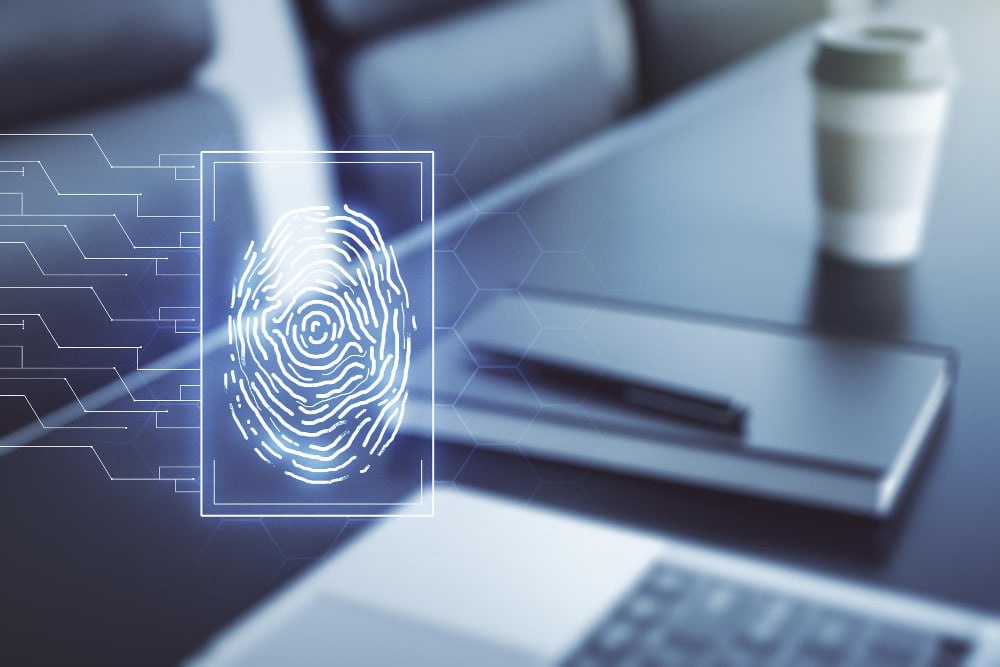
Biometric Documents
In recent years, biometric documents have become widely used and an integral part of the citizen identification system in most…
In recent years, biometric documents have become widely used and an integral part of the citizen identification system in most countries. These documents use a person’s unique physical or behavioral characteristics — such as fingerprints, iris, face, and voice-to verify their identity. Introducing biometric technologies provides high security and fraud protection and simplifies identification processes in various areas, from border control to banking services. However, new challenges, such as privacy, data protection, and ethics, are also emerging with the growing use of biometrics. In this article, we will look at the critical aspects of biometric documents, their advantages and disadvantages, their impact on society, and the specifics of their receipt in Belarus by its citizens and foreigners.
What are biometric documents, and what are their main features?
Biometric documents contain unique physiological or biometric information about a person to identify them. These documents include identity cards, passports, driver’s licenses, and ID cards that contain embedded chips or other elements that allow you to read this data.
Critical features of biometric documents
- Contain personal data
Biometric documents contain unique biometric characteristics of people. Depending on the document, this may include:
- Fingerprints.
- The iris of the eye.
- Face (3D scanning).
- Voice template.
2. Contain electronic chips
Most biometric documents have built-in chips that store encrypted biometric information and other personal data, making them harder to fake.
3. Have a high level of security
Biometric documents offer a high level of protection, as identification based on unique biometric data is much more difficult for fraudsters than traditional methods based on passwords or physical copies.
4. International use
Such documents are often standardized and can be used both at the national level and for international travel. This simplifies border control processes and other institutions.
Where biometric documents are most often used
Using biometric documents significantly speeds up border control, helps optimize the electronic services of banks and government agencies, and provides high protection against forgery.
The ID card contains the owner’s data, such as a photo and fingerprints, as well as other information that is read by the computer. This fully complies with the International Civil Aviation Organization (ICAO) standards.
How Biometric Documents Affect Society
Biometric documents, such as passports and ID cards, have a significant impact on society in several ways:
1. Security and fraud prevention
Biometric documents contain unique biometric data, such as fingerprints and faces, which makes forgery and fraud more difficult. This increases security and helps prevent the use of forged or stolen documents.
2. Identification efficiency
Using biometric data can significantly simplify and speed up the identification process in various public and private institutions, including banks, airports, and security services.
3. Improving access to services
Biometric documents can facilitate access to public and private services, allowing you to quickly and securely verify your identity. This is especially true for people with disabilities, who may find it challenging to imagine traditional papers.
4. Increase the level of trust
Society can feel more secure knowing that modern technologies are being used to ensure security and prevent crime.
5. Privacy and ethics issues
The use of biometric data raises concerns about privacy and the protection of personal information. Appropriate measures should be taken to prevent unauthorized access to the data and its use for improper purposes.
6. Long-term investments
Implementing a biometric document system may require significant expenditures on infrastructure and technology development, which may affect the budgets of the state and the private sector.
7. International integration
Countries that use biometric documents can simplify international travel and interaction, as such documents are recognized in many countries and contribute to people’s free movement.
Thus, biometric documents significantly impact various aspects of society. They contribute to security and convenience but also raise questions about privacy and ethics.

Biometric documents in Belarus
Belarus has biometric identity documents and biometric documents for leaving and entering Belarus (biometric passport).
ID card
A biometric identity document is an identification card (ID card) used only within the country. One side of the card contains the same information as in the usual paper passport, as well as a photo and signature of the owner. On the other side is a chip and a QR code.
Biometric passport
A biometric passport is a document for entry and exit from Belarus. It looks like a familiar passport. All of its pages, except the first one, are blank. These are pages for putting down visas and marking entry and exit. Belarusian citizens can obtain two biometric passports. One can be given for visa application, and the other can be used for traveling to visa-free countries, for example, while the first is in the embassy.
Belarusian citizens can choose between a regular passport on paper or biometric documents.
When and for how long can Belarusian citizens receive biometric documents
To leave Belarus, you can apply for a biometric passport for your children from birth and yourself. The choice between a regular passport and an ID card must be made at the age of 14 because, from this age, a passport is required. In addition, you can replace your regular passport with biometric documents at any time.
Children under 14 are issued biometric documents for five years and from 14 years for ten years.
Where to get biometric documents in Belarus
To get an ID card and a biometric passport simultaneously, you must apply to the Citizenship and Migration Department (CMDs) of the Ministry of Internal Affairs at your place of residence in Belarus with a passport and pay the state fee. This amount is two base units (80 Belarusian rubles). For pensioners, disabled people, and children under 14 years of age, the cost is equal to 1.5 of the basic amount (60 rubles).
CMDs accepts the application in electronic form, takes a photo, takes fingerprints, and samples the signature. Biometric documents are usually issued in 15 days. However, you can speed up the process by paying the state fee and issuing them in 10 or 5 days.
You can apply for a biometric passport at the same time as the ID card or after receiving it. It is required for permanent residence abroad.
The cost of issuing or exchanging an ID card is 1.5 basic units (30 rubles), while a biometric passport is two basic units (80 rubles).
For those who have permanently excited Belarus, biometric documents are issued at the CMDs at the place of the last registration or the embassy’s consular department.
The peculiarity of Belarusian biometric documents is that once you receive them, you cannot return them and switch to a regular paper passport.
When can a foreign citizen get a biometric residence permit in Belarus?
Foreigners who apply for a residence permit in Belarus are issued only biometric documents.
A biometric residence permit in Belarus is issued only to those foreigners who permanently reside in Belarus: they have a permanent residence permit. Such a permit is issued to foreign citizens in some instances. For example, such a permit can be obtained in several cases:
- If you have close relatives in Belarus.
- If you have refugee status in Belarus.
- If you have the right to family reunification in Belarus.
- If you have lived continuously in Belarus for five years after receiving a temporary residence permit (or three years for highly qualified employees). In that case, the foreigner did not leave Belarus all this time or left for no more than 90 days in a calendar year for a valid reason.
- If you have invested funds in the territory of Belarus – at least 15,000 basic units. This is 600,000 Belarusian rubles or about 170,000 euros.
- If you are among the employees that Belarusian companies need.
- If you are a Russian citizen.
Once a permanent residence permit is obtained, a foreign citizen must obtain a biometric residence permit.
Biometric residence permit of a foreigner
To get a biometric residence permit, you will need a birth certificate, a foreign passport (if you have one), some other documents, and payment of a state fee—2 base values (80 rubles or approximately 14.5 euros).
A biometric residence permit confirms that a foreigner is allowed to live in Belarus and certifies the identity of a foreigner within the country. A biometric residence permit looks like a plastic smart card with a photo.
Disadvantages of biometric documents
1. The confidentiality of personal data is questionable.
Collecting and storing biometric data raises questions about the security of personal information and its potential use for fraud.
2. The implementation cost may be high.
Creating and maintaining biometric identification systems can be expensive.
3. Social and ethical issues.
The need to collect biometric data raises discussions about the legality and ethics of such practices.
Advantages of biometric documents
1. High level of security
The complexity of forgery makes them a reliable tool for protecting against fraud.
2. Simplification of personal identification
Fast and accurate identity verification significantly speeds up service in airports and banks.
3. Reduce the risk of identity theft
The use of biometric data reduces the likelihood of unauthorized access.
Biometric documents are crucial for modern identification, enhancing security and efficiency while reducing fraud. In Belarus, they facilitate easier access to services and international travel, though concerns about privacy and costs persist. Despite these issues, biometric identification is shaping the future of secure authentication. Our company assists businesses and individuals with HR services for documentation, ensuring compliance and simplifying the process for residence permits and work authorizations in Belarus.
Our Blog
The latest news in our blog
IT Education in the HTP
IT education plays a key role in shaping the workforce for the modern digital economy. For information technology companies and…
“International Company” Status (for IT Companies)
For IT companies operating in international markets, the choice of jurisdiction and legal status is a critical factor for sustainable…
Congratulations on New Year 2026 from the EOR.by team!
Dear friends, partners and clients! The EOR.by team wholeheartedly wishes you a Happy New Year 2026! The past year has…
Contact
We’re available for the new projects



